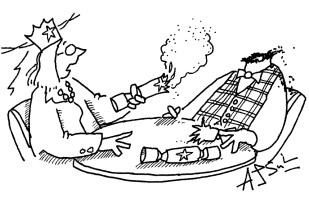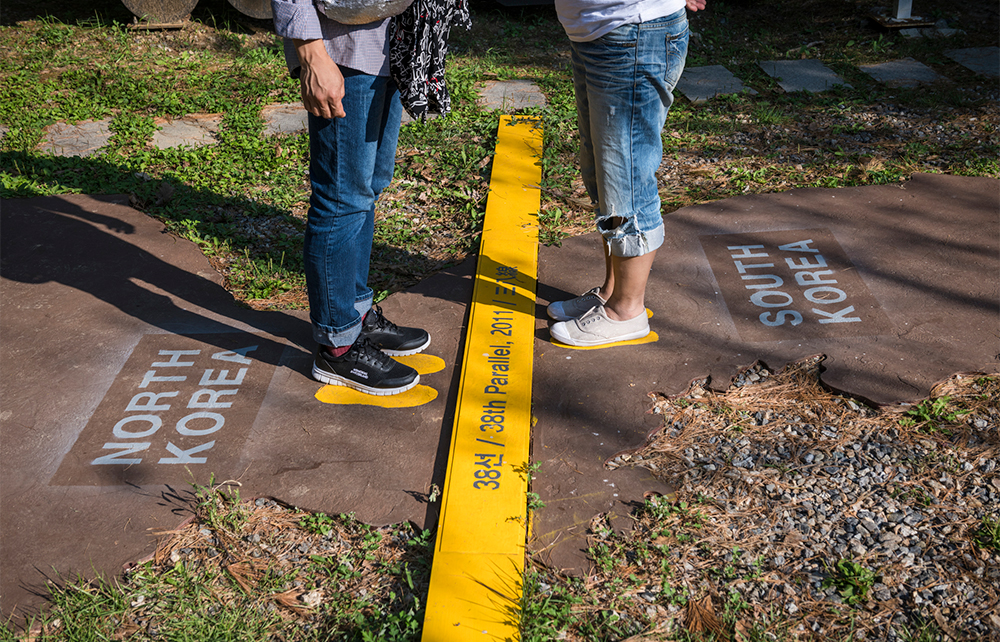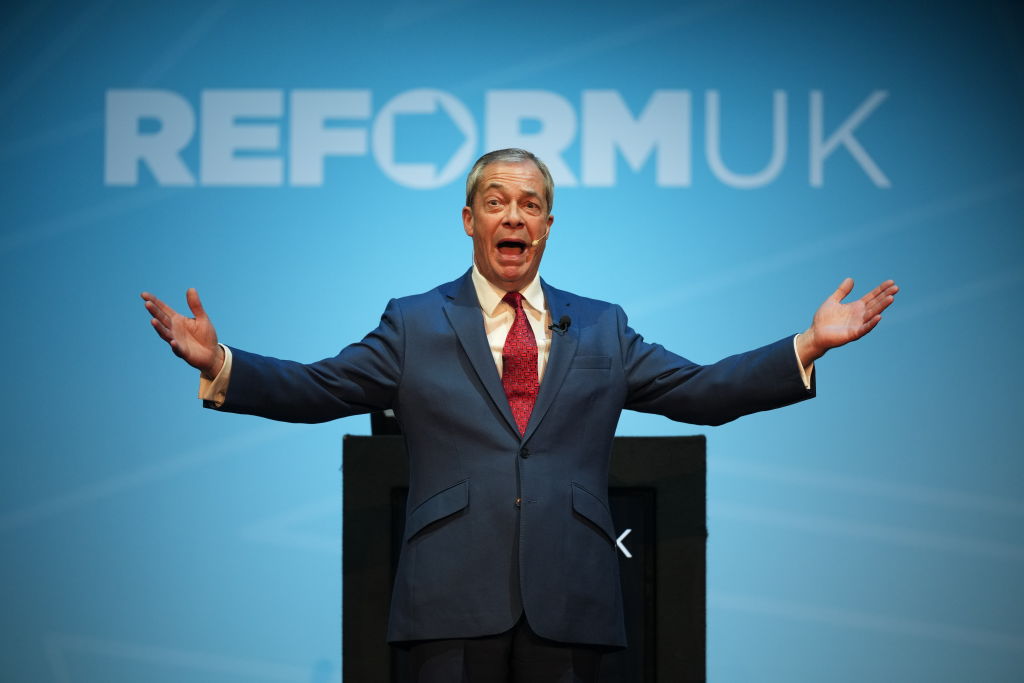It is the strangest place, the demilitarised zone (DMZ) that separates South Korea from North Korea. It is simultaneously a historic battlefield, a sombre graveyard, a tourist honeypot full of coach parties from Seoul, and a Cold War frontier, hotly defended on either side. One minute you are looking at a kiddies’ funfair, or a shop that sells ‘souvenir North Korean money’, the next you are staring at endless barbed wire and monuments to failed North Korean defectors, shot dead as they attempted to cross the two-and-a-half-mile strip of landmines. Which itself has turned into an Edenic eco-haven, full of deer and eagles, as the humans have vanished.
In the middle of Imjingak Resort, the touristy yet militarised focus of most DMZ visits, you can find one of those cute fingerposts that points to various places around the world, the sort of thing you might see at John O’Groats, or indeed in the Korean War sitcom Mash. In the DMZ, this multi-digit signpost points out that London is ‘5,500 miles’ this way, while Vladivostok is ‘460 miles’ that way, and so on.
Ukraine is fighting hard but it cannot sustain this carnage indefinitely, not without risking demographic collapse
Missing from the signpost is Kyiv, Lviv or Kharkiv. But they really should be there, because I believe – or fear – Ukraine is heading in the direction of a Korean-style DMZ. A frozen wartime frontier; a tragic armistice that might endure for decades. There are, of course, huge differences between these two conflicts – e.g. Ukraine is largely a war between democracy and autocracy, rather than capitalism vs communism – but there are too many similarities for the parallel to be ignored. To explain why, I must describe my own experiences in Ukraine.
I’ve visited Ukraine twice in the past 18 months and both tours were as compelling as they were challenging. My first visit was to west Ukraine, in late spring last year; my second was this summer. My 2023 trip revealed a nation full of resolve despite mounting losses. The toll of the war was sadly apparent. The citizenry seemed to consist mainly of women, children and older men. When I did see younger men, they were commonly in uniform or recuperating from injuries.
Over a slender glass of wheat beer in Lviv’s handsome main square, a recent graduate named Maksim spoke matter-of-factly about his impending conscription. Four of his university friends were already dead. ‘The last one emailed me saying he felt lucky to be alive after losing his whole platoon,’ Maksim told me. ‘A week later, he was gone.’ Such conversations became horribly familiar as I travelled onwards – tales of loss related with a stoic fatalism. Nonetheless, Ukrainians seemed determined to win, whatever ‘win’ might mean.
By my return this summer, the mood had notably darkened. A promised counteroffensive had stalled into a war of attrition dominated by defensive drones, mines and artillery. In Odessa, the constant hum of portable diesel generators was the soundtrack for a city struggling with Russian assaults on power grids. At the same time, Ukraine was scoring victories against Russia’s Black Sea fleet, but it all seemed desperately tit-for-tat.
The impact on Ukraine was likewise visible in Kyiv’s Maidan Square. For each fallen Ukrainian, soldier or civilian, there was a small flag planted in the earth. There must have been tens of thousands, a vast yellow-and-blue bonsai forest of loss. I watched women weeping before this impromptu memorial, while young people arrived with fresh flags. The message was unavoidable: Ukraine is fighting hard, but it cannot sustain this carnage indefinitely, not without risking demographic collapse. Hence the need for some resolution. Peace, or at least a truce.
This may sound defeatist – like capitulation to Vladimir Putin’s aggression. But we must confront the uncomfortable facts, just as the commanders in Korea did in 1953.
Barring a dramatic shift in the strategic balance – perhaps through Chinese intervention, or Russian economic collapse – Ukraine is following Korea’s path. An armistice roughly along current front lines, while a bitter draught for all, may be the least-worst outcome, perhaps the inevitable outcome. Putin has lost hundreds of thousands of men and risked civil strife; he too will need an exit ramp, some compromise he can brandish as a form of hollow victory. Meanwhile, Ukraine needs to staunch the endless bleeding of people.
What might such an outcome look like? For the West, it means we must enfold surviving Ukraine as we once embraced South Korea: fortifying all our frontiers with vigour, so Putin is not emboldened to go further. We will need to defend the Dnieper as we already defend the DMZ. There are, still, 30,000 US troops in South Korea – and Korea may need more to keep a stable peace now they’ve declared (and undeclared) martial law in Seoul. Europe will have to similarly step up in Ukraine.
As for Ukraine herself, if Korea’s DMZ is anything to go by, then a ‘frozen war’ might last a seriously long time and have some peculiar consequences. For example, as my tour group meandered through the DMZ village and stared across the front lines at silent North Korea, I asked our guide about defectors and she told me some of their melancholy stories. And their increasing difficulties in adapting to South Korean life.

When I asked her why they found it hard, she replied: ‘One reason is language. In South Korea we have absorbed many English words, our language evolves, but in North Korea the language has remained pure. They refuse new words, even their grammar is different. As time goes by, it is harder for us to understand them.’ In other words, thanks to the artificial frontier, the Korean language is speciating into two separate tongues. It is easy to see this being repeated in a divided Ukraine, as cultures and customs diverge, making any reunification much harder.
After that, I asked the guide about the funfair at Imjingak Resort. The jarring sight of carousels and dodgems next to tombs, tanks and North Korean ‘infiltration tunnels’. Why a funfair?
The guide sighs. ‘A lot of people ask this. Why we have entertainments in such a serious place. The answer is: we have this fair so that when Korean families come here, their kids can have somewhere to laugh and be happy. While the older people cry.’








Comments